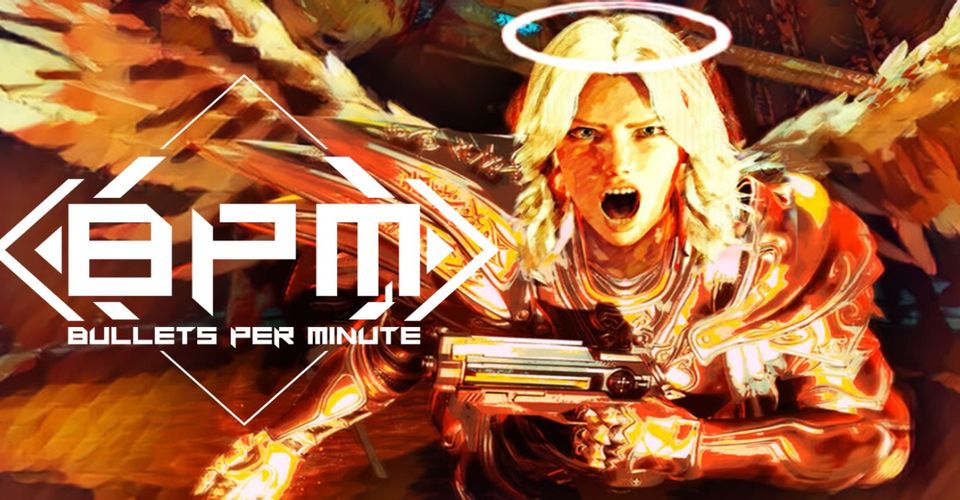How to Stay On Beat in BPM: Bullets Per Minute (The Easy Way)

BPM: Bullets Per Minute is a new, rhythm-based, rogue-like, first-person shooter recently released by AWE Interactive. Besides being a serious tongue twister, it is also a really fun mashup of contrasting genres. The game is kind of a bullet-hell akin to the newer DOOM titles, however, in both mechanics and scope, BPM is more comparable to Gunfire Reborn, another rogue-like shooter, but without the rhythm elements of BPM. However, for those who enjoy having their in-game performance contribute to the music, BPM is a great choice.
As mentioned earlier, BPM is made up of a couple very different genres that bring their own unique elements to the game. BPM is a rogue-like shooter in the sense that the objective is to traverse through procedurally-generated levels by clearing them out of various enemies and if the player is to be defeated, they must start back at level one. Although player’s progress through the stages is lost on death, each death allows an opportunity for the player to learn from their mistakes. The gameplay mechanic that makes BPM unique to other FPS rogue-like games is the need to line up most actions with the Rhythm. Players may think their FPS skills will be able to compensate for their terrible timing, but clearing a level in style will require paying attention to the beat. In BPM, staying accurate with both aim and rhythm is crucial to getting a great score, and mastering both aspects takes a bit of practice. However, if this sounds like too much work, stay tuned for the absolute easiest way to stay on-beat and some other beginner tips.
The Easy Way To Stay On-Beat in Bullets Per Minute

The absolute easiest way to stay on-beat is to access the game’s settings and enable Auto Rhythm. Plain and simple. This option is great for players who just want to focus on the FPS mechanics of the game or any players that want a more forgiving experience. Alternatively, players could hold off on Auto Rhythm and instead change their Rhythm detection to loose. However, these options negate a lot of the challenge and learning curve of the game. Instead, here is how to stay on-beat without changing any options.
The crosshair is the part of the HUD to pay the most attention to. Essentially, it acts as a metronome for players to see exactly when the next beat is. When one of the incoming horizontal arrows lines up with the crosshair, an action can be performed. In theory, players could just constantly refer to their crosshair to see when to perform an action. However, when levels begin to get more difficult and players don’t have enough time to both watch the metronome and aim the crosshair dot, it is advised that players instead try and internalize the rhythm. To do this, take a rhythmic count before entering a room filled with enemies. Every time a larger white arrow lines up with the crosshair, that counts as a whole beat. On every whole beat, players can shoot, reload, and dash successfully. To make the counting more practical, count the beats in groups of four. The smaller white triangles approaching the crosshair to signify half beats and players can also perform most actions on them. Half beats are the key to speed and players can include them in their count by introducing a quick “and” in-between their counts for whole beats. To hopefully make it clearer, players can try clapping their hands on every whole beat. Every time the player’s hands are apart and ready to clap on the next whole beat, that is the half-beat. Players should first practice a couple runs just being accurate on the whole beat and then introducing actions on the half-beat once they get a handle on the game. If players can internalize the rhythm, they can spend more time scanning their surroundings which is important in a game where the level changes with each run.
Other Tips For Beginners in Bullets Per Minute

For those who are new to FPS rogue-likes, movement is very important. Players should try to always be moving in order to not be an easy target. In most rogue-likes, the priority should be dodging hits instead of tanking them because health points do not regenerate over time. However, when a projectile is tracking the player, they will need to perform a dash, which must also be timed with the beat. It is also important to note that reloading in BPM is also reliant on beat timing. Most weapons will need two rhythmic presses of the reload button, but weapons like the revolver and shotgun require a button press for each individual bullet/shell. This is an easy feature to overlook, but a badly timed reload can cut a good run short. As mentioned earlier, the levels are procedurally generated so layouts will be different every run, but each room should almost always have something special for the player, sometimes an opportunity to upgrade an ability. Therefore, players should make sure to thoroughly explore each stage before moving on to the next. To further aid exploration, players will notice that there is a mini-map in the top-left corner. The map is useful for tracking rooms the player has already been in as well as letting the player know what is behind each door. For example, the anvil icon over a room indicates there is an armory there. Weapon range is also another easily overlooked mechanic in BPM worth mentioning. Although the crosshair dot may be lined up with an enemy, they may still be out of range and the player will end up doing no damage. When the incoming arrows link up to form a diamond in the center of the screen, the player is both on the beat and about to hit the enemy.
BPM: Bullets Per Minute is currently available for purchase on Steam and is planning a console release in 2021.

















